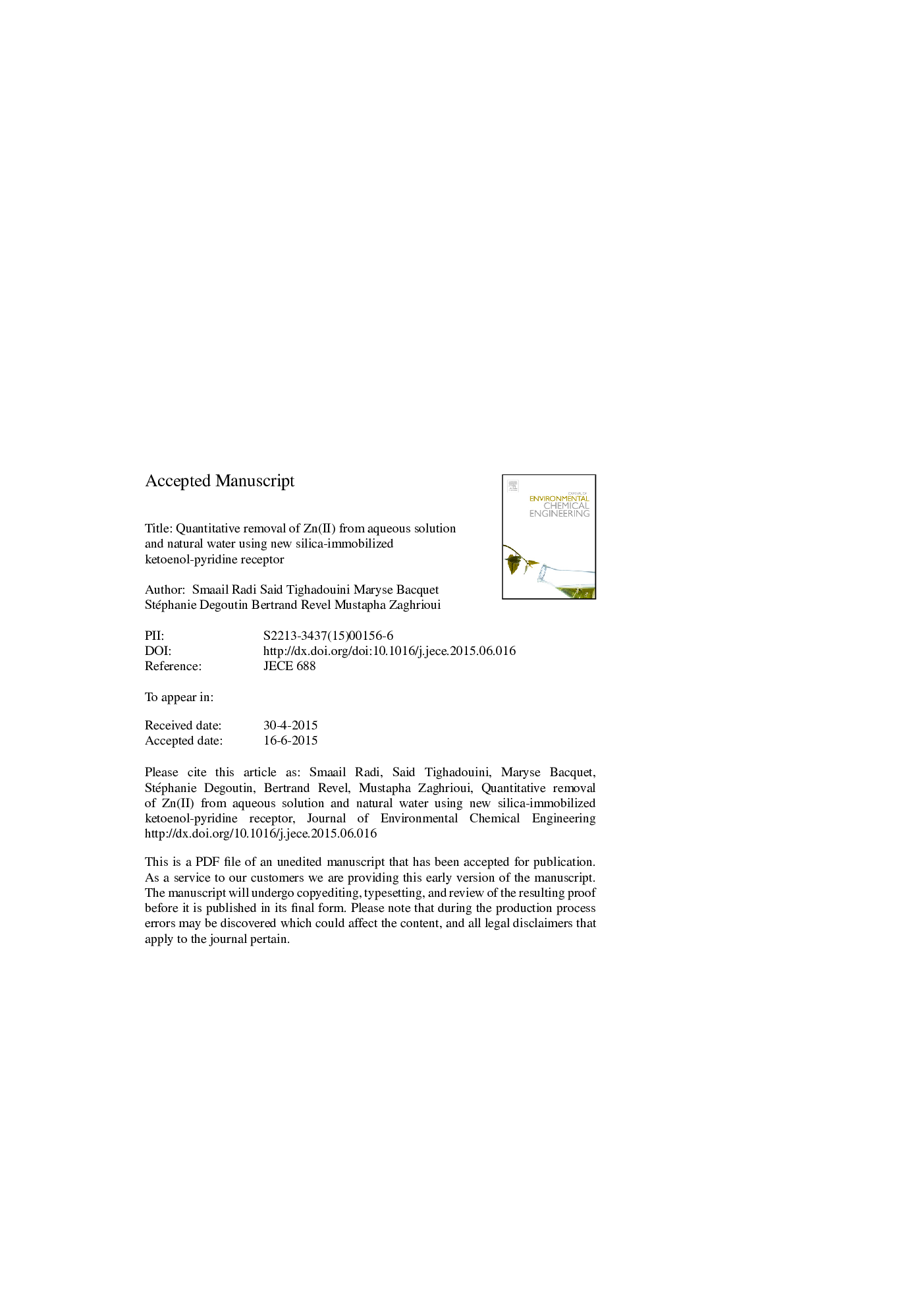| Article ID | Journal | Published Year | Pages | File Type |
|---|---|---|---|---|
| 10277180 | Journal of Environmental Chemical Engineering | 2015 | 36 Pages |
Abstract
New design material based on ketoenol-pyridine-immobilized silica was fabricated for quantitative removal of Zinc. Analysis of surface chemistry was evaluated using BET, BJH, EA, FT-IR, 13C NMR, SEM and XRD. TGA was also used to certify the good chemical and thermal stability of the new surface. Adsorption studies have demonstrated the ability to highlight the surface designed for quantitative and selective removal of Zn(II) from aqueous solutions and real samples using ICP-AES. All experimental parameters that can affect the adsorption, such as kinetics, time of contact, pH, concentration and temperature of the system were studied. The adsorption data were fitted into Langmuir isotherm model. The thermodynamic parameters of ÎH° and ÎS° were positive while ÎG° was negative, and revealed that the process was endothermic and spontaneous in nature. The adsorption process was found to follow a pseudo-second order kinetics. The adsorption parameters showed that the material presents further improvements and has the largest capacity and highest selectivity for the effective adsorption of Zn(II) (112.5 mg of Zn(II)/g of silica) compared to others described adsorbents. The newly material was used for the extraction of metals from natural water and showed efficiency and selectivity results for Zn(II).
Related Topics
Physical Sciences and Engineering
Chemical Engineering
Chemical Engineering (General)
Authors
Smaail Radi, Said Tighadouini, Maryse Bacquet, Stéphanie Degoutin, Bertrand Revel, Mustapha Zaghrioui,
